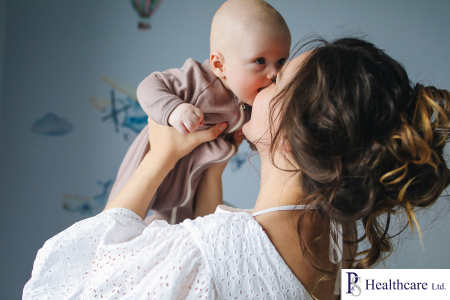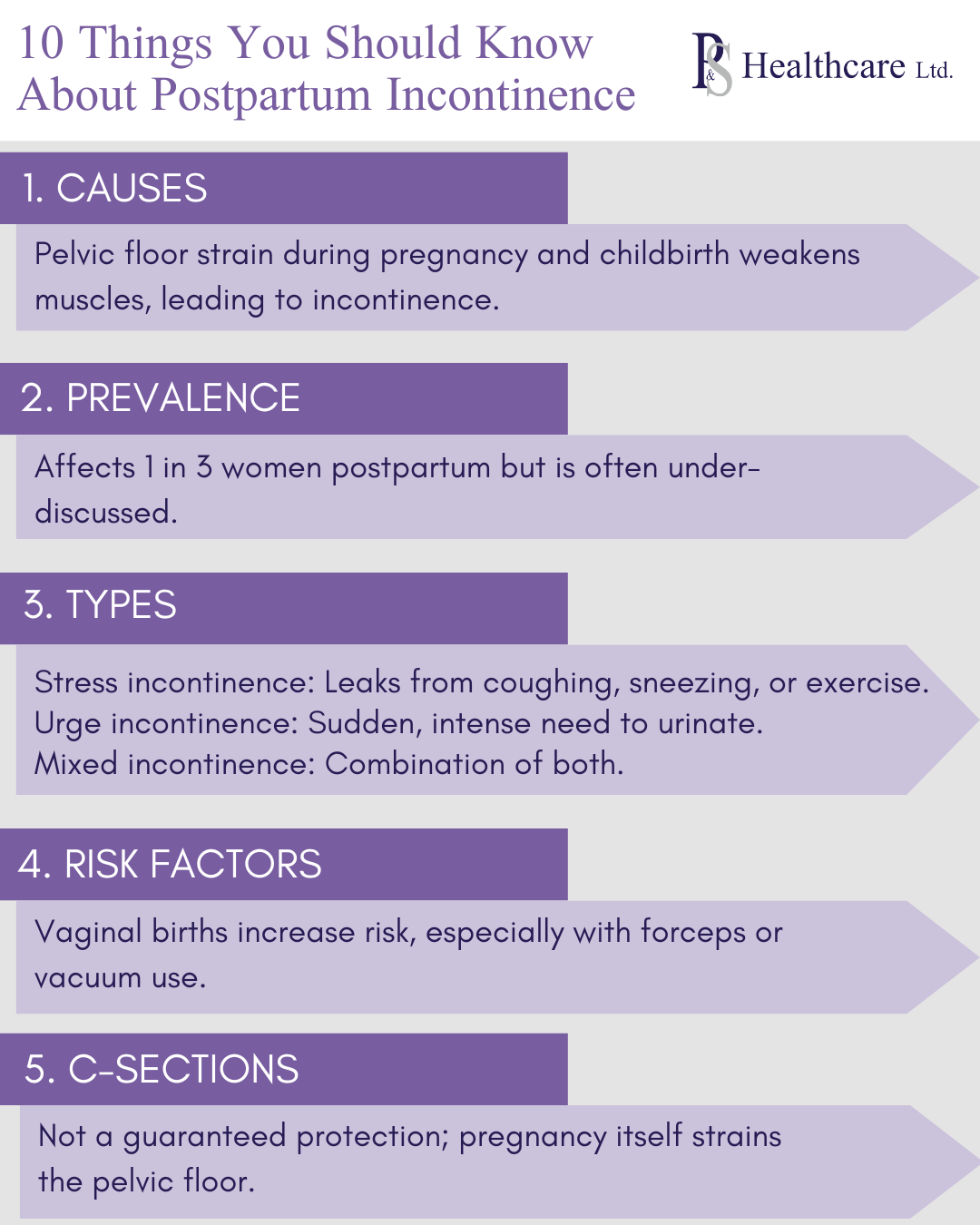10 Things You Should Know About Postpartum Incontinence

Postpartum incontinence is a common yet often under-discussed aspect of post-pregnancy life. Many women experience urinary leakage after giving birth, but understanding the condition can help in managing and improving it. Here are ten essential things you should know about postpartum incontinence:
1. What Causes Postpartum Incontinence?
The main cause of postpartum incontinence is the strain placed on the pelvic floor muscles during pregnancy and childbirth. These muscles support the bladder and control urination, but they can weaken due to hormonal changes, the baby’s weight, or the delivery process.
2. It’s More Common Than You Think
Studies show that up to 1 in 3 women experience some form of urinary incontinence after childbirth. Despite its prevalence, many women feel too embarrassed to talk about it.
3. There Are Different Types
The most common types of incontinence postpartum are:
- Stress incontinence: Leakage during activities like coughing, sneezing, or exercising.
- Urge incontinence: A sudden, intense need to urinate.
- Mixed incontinence: A combination of both stress and urge incontinence.
4. Vaginal Deliveries May Increase Risk
While postpartum incontinence can occur after any type of delivery, vaginal births are more likely to cause pelvic floor damage, especially if forceps or vacuum assistance was used.
5. C-Sections Don’t Guarantee Protection
Even women who have caesarean deliveries can experience incontinence. Pregnancy itself places pressure on the pelvic floor, which can lead to leakage regardless of the delivery method.
6. Pelvic Floor Exercises Can Help
Strengthening your pelvic floor muscles with exercises like Kegels can significantly reduce symptoms. These exercises involve tightening and relaxing the pelvic floor muscles to improve their function.
7. It’s Not Always Permanent
For many women, postpartum incontinence improves with time, especially with proper care and strengthening exercises. However, it’s important to address the issue early to prevent long-term complications.
8. Products Can Provide Relief
There are numerous products available to help manage incontinence, such as our washable incontinence pads, which are reusable and environmentally friendly, or our leak-proof underwear, designed to provide discreet protection.
9. Seek Professional Help If Needed
If incontinence persists or worsens, consult a healthcare professional. A pelvic health physiotherapist can provide tailored exercises and treatments, while doctors can offer medical interventions if necessary.
10. Don’t Be Afraid to Talk About It
Postpartum incontinence is a normal part of recovery for many women. Talking openly about it, whether with friends, support groups, or professionals, can reduce feelings of isolation and help you find effective solutions.
Postpartum incontinence can be challenging, but it’s manageable with the right approach. Remember that you’re not alone, and there are steps you can take to improve your pelvic health and regain control. Start with small changes, seek support when needed, and prioritise your well-being as you navigate this new chapter of motherhood.


More News:
- 10 Things You Should Know About Postpartum Incontinence
- 10 Common Triggers of Urinary Incontinence in Women Over 50
- 10 Tips for Night-Time Incontinence Management in Adults
- 10 Ways to Manage Incontinence While Playing Sports
- 10 Tips for Managing Faecal Incontinence in Adults
- 10 Lifestyle Changes to Manage Urinary Incontinence Symptoms
- 10 Ways to Manage Urinary Incontinence During Pregnancy
- 10 Causes of Urinary Incontinence in Men and How to Treat Them
- 10 Practical Solutions for Coping with Incontinence at Work
- 10 Myths About Menopause and Incontinence You Should Stop Believing
- 10 Foods to Avoid to Prevent Bladder Irritation and Incontinence
- 10 Effective Pelvic Floor Exercises for Urinary Incontinence
- 10 Common Causes of Bedwetting in Children and How to Address Them
- Causes of Faecal Incontinence
- Breaking the Silence: Managing Incontinence with Confidence
- Supporting Loved Ones with Incontinence: A Caregiver's Guide
- Top 10 Tips for Managing Incontinence Comfortably This Christmas
- Pregnancy and Postpartum Incontinence: Prevention and Recovery
- 10 Random Facts About Pee You Probably Didn't Know
- Diet and Bladder Health: Foods That Help and Hurt
- Helping Your Child Manage Incontinence: A Parent's Resource
- The Most Common Bladder Control Problems and How to Manage Them
- 10 Things That Can Make Incontinence Worse
- Incontinence Myths vs Facts - Dispelling Common Misconceptions
- Top 10 tips to help with bladder control during pregnancy
- 10 Effective Ways to Stop Bladder Leaks & Manage Incontinence
- P&S Washable Face Mask with ViralOff
- New Product For Men - The Slip Brief
- New Monthly Protection Briefs For Women
- New Product - The OooPS Pant for Stress Incontinence
- New Adult Inco-elite Range Launched
- EMDA WOMEN OF WORTH AWARD 2009
- New Website Launched
- New Website Under Development

